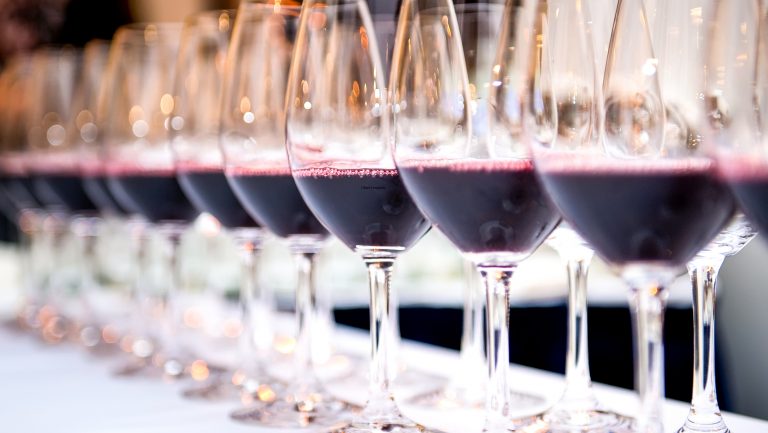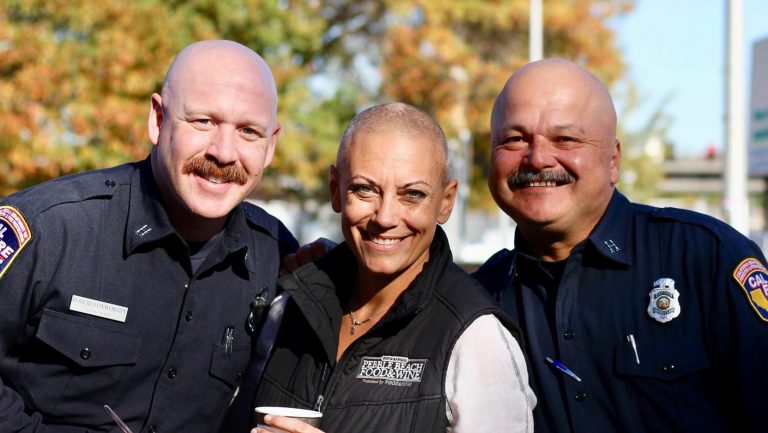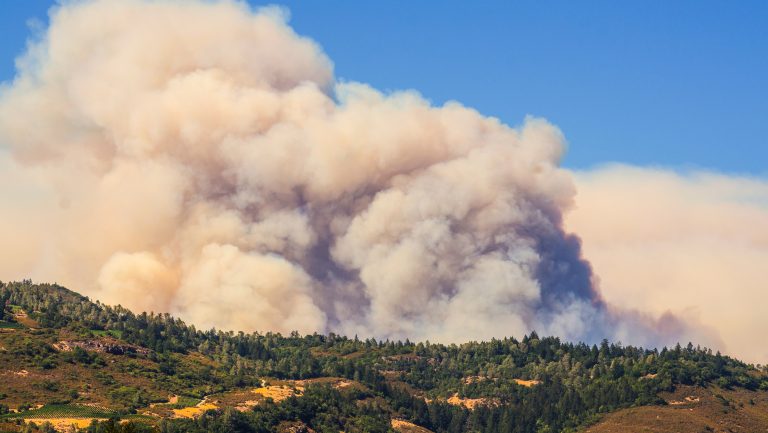Jim Baker thought he’d heard it all. Then he heard from the marching band.
The owner of micro winery Chateau Niagara in western New York, Baker produces a mere 600 cases of wine a year. Yet he receives at least one request for a charitable donation of his product every week. Most of the nonprofit organizations that contact him hail from the Rochester and Buffalo areas.
But a marching band in Ohio—really? “The person’s name was unfamiliar. We checked our email list … no such person in our contacts,” says Baker, bewildered. “I’m still at a loss to figure out how they got ahold of us.”

Don’t miss the latest drinks industry news and insights. Sign up for our award-winning newsletters and get insider intel, resources, and trends delivered to your inbox every week.
’Tis the season of charitable giving. And—as anyone in who works in the food and beverage industry knows—’tis also the season of the hit-up: The apologetic ask from your college friend who’s on a nonprofit board, the solicitation from your neighbor who’s on the school auction committee, the plea from your town’s arts organization. Each truly represents an organization more worthy than the last—well, for the most part.
This holiday season, many in the industry are taking more time to consider which causes to support. Between the fires that have devastated Sonoma County and the Napa Valley, and the dire situation in Puerto Rico after Hurricane Maria (cheers to Chef José Andrés for stepping up), it feels as if there’s more need out there than ever.
Because so many nonprofits rely heavily on events that feature wine, such as fund-raising auctions, wineries like Chateau Niagara are disproportionately approached for donations. For small- to medium-sized producers, already running on thin margins, it can be agonizing to receive pleas for help, often daily, most of which are legitimate and compelling.
“We receive so many donation requests. If we said yes to them all, we would give away our whole production,” says Alison Sokol Blosser, the copresident, with her brother, at Sokol Blosser winery in Oregon’s Willamette Valley. Sokol Blosser’s solution is to make a few larger donations where she anticipates her gift will have the most impact, and to offer a 50 percent charity discount on select wines for causes she’d like to support but can’t afford.
For micro-winery proprietors who are already stretched thin, donations simply aren’t an option if there’s no prospect of ever seeing any return on investment. “People getting tipsy on their nondeductible dollar’s worth aren’t remembering what wine was poured into their glasses by the end of the night, nor give a care as to what wine was hiding in a paper bag on the raffle wall,” points out Jenny Mosbacher, co-winemaker at the boutique Oregon label Fossil & Fawn. She prefers to send personal monetary donations, outside of work, to causes she supports.
“From an unemotional business point of view, there needs to be some intrinsic value attributed to the donation. A donation is still an expense, just like a marketing or advertising expense,” advises Jessica Villagrana, a consultant to nonprofit organizations who is based in Raleigh, North Carolina.
Villagrana, who used to work in the wine industry, suggests that wineries run through a list of questions before making a commitment: “Is there an alignment between the brand and the mission? What are the demographics of the donor base, and is there an alignment with the winery’s target consumer? How much exposure will the winery receive in exchange for the donation, and is that value comparable to the cost of an advertising vehicle reaching the same audience?”
With all due respect to tuba, trombone, and snare drum players in Ohio, nonprofits should consider the same list of questions before making a request.
5 Tips for Giving Wine Wisely
Go for Face Time
Focus your donations on events where you can pour your own product and engage personally with attendees. “I am there to tell my brand story, build new brand ambassadors, and grow my mailing list,” says Meg Murray, founder of Nasty Woman Wines. “Sometimes I’m even able to sell my wine by the bottle for people to take home. These situations are win-wins.” When she feels she can’t donate wine, Murray offers a Women Empowerment Discount in exchange for a listing as an event sponsor.
Offer an Experience
Rather than wine, donate an experience, such as a winery tour and private tasting, to charity events. These packages are often highlighted during live auctions at events, optimizing exposure, and the attendees who bid on them tend to be in higher income brackets. The icing on the cake is that guests are likely to make case purchases and possibly join your wine club at the conclusion of an enjoyable tour and tasting.
Engage Your Employees
At Illahe Vineyards, a small winery in the Willamette Valley, each employee can donate a case of wine or a private tour and tasting for eight people to the cause of his or her choice every year. “It’s a way for our employees to feel involved in causes that they believe in, and it gives them a way to make a difference,” says Bethany Ford, the sales director at Illahe. “It also helps us prioritize the donation requests that we receive.”
Focus Your Efforts
Wineries inundated with requests can slow the influx by issuing formal request guidelines, or by communicating that support will be limited to a single cause. For example, Nasty Woman Wines’ website includes a philanthropy page stating that 20 percent of net profits will go toward encouraging women to take on policy and leadership roles. This filters out groups that don’t fit with owner Meg Murray’s misson.
Sell Creatively at Cost
“Our son’s preschool had a fund-raiser with a winery that turned your child’s drawing into a wine label,” says Tyler Moriguchi, a Seattle resident. “I think there was a six-bottle minimum purchase, but we bought at least a couple of cases and gave them away as holiday gifts. The winery sold the bottles at cost to the preschool and allowed them to charge whatever they wanted.”

Dispatch
Sign up for our award-winning newsletter
Don’t miss the latest drinks industry news and insights—delivered to your inbox every week.
Katherine Cole is the author of four books on wine, including Rosé All Day. She is also the executive producer and host of The Four Top, a James Beard Award–winning food-and-beverage podcast on NPR One. She is currently working on a fifth book, Sparkling Wine Anytime (Abrams), to be published in Fall 2020.






